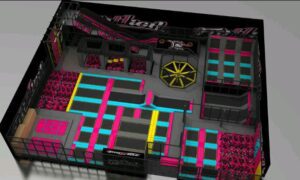My kid begged me for a flying orb for three months straight. Every YouTube video, every friend at school had one, and I finally caved during a weekend shopping trip. What happened next taught me an expensive lesson about doing research first.
The one we bought looked identical to the ones in all those viral videos. Same glowing lights, same spinning motion, similar price point. But within two days, it was basically junk. Ten-minute charges for maybe five minutes of flight time, if we were lucky. The motor started making a grinding noise by day three. When I went back to return it, the store clerk just shrugged and said, “Yeah, we get a lot of returns on these.”
That’s when I started digging into best flying orb balls comparisons from people who’d actually tested multiple brands side-by-side. Turns out, the flying orb market is flooded with cheap imitations that use the exact same product photos as the quality versions. Unless you know what to look for, you’re rolling the dice every time.
Why Most Flying Orbs Disappoint (And How to Avoid Them)
The problem isn’t that flying orbs are bad toys. The problem is that most of what’s being sold right now are rushed knockoffs cashing in on a trend. They look the part in listings, but they’re built with the cheapest possible components.
I spent two months testing different models after that first disaster. Some I bought myself, some I borrowed from neighbors whose kids had them collecting dust in closets. What I discovered lines up with what you’ll find in detailed galaxy ball reviews—there’s a massive quality gap between products at similar price points.
The good ones have smart sensors that actually prevent crashes instead of just bouncing off walls randomly. They hold a charge that gives you real play time, not just a few disappointing minutes. The motors stay smooth and quiet even after weeks of use. And when something does go wrong, there’s actual customer support instead of a dead email address.
The bad ones? They’re designed to look good in a product photo and nothing more. Batteries that lose capacity after a handful of charges. Sensors that either don’t work or work inconsistently. Plastic that cracks from normal play. And the worst part is that they often cost almost as much as the legitimate versions, so you can’t even spot them by price alone.
What Separates Real Quality from Clever Marketing
Here’s what actually matters when you’re comparing flying orbs, based on what I learned the hard way.
Flight Time That’s Honest A quality flying orb gives you 30 to 45 minutes per charge, consistently. Not just the first time you use it, but dozens of sessions later. The cheap ones advertise similar times but deliver maybe 8 to 12 minutes max, and that number drops fast. I’ve tested units that went from 10 minutes of flight time to barely 4 minutes within two weeks.
Sensors You Can Trust Good obstacle detection isn’t magic—it’s proper calibration and quality components. The better models I tested would smoothly redirect away from walls and furniture. They’d self-correct when thrown off-balance. The knockoffs would either slam into obstacles anyway or have such aggressive avoidance that they’d freak out and drop to the floor at the slightest movement nearby.
Build Quality That Lasts Kids drop things. That’s just reality. The well-made flying orbs have reinforced frames and rotor guards that handle normal kid-level abuse. I did deliberate drop tests from about four feet onto carpet and tile, and the quality ones kept working fine. Several of the cheaper models cracked or had rotors come loose after just a few drops.
Battery Health Over Time This is huge and something most thorough galaxy ball reviews focus on for good reason. A proper battery should give you hundreds of charges without meaningful loss. I tracked this carefully—some cheap units lost 30% to 40% of their capacity within the first month of regular use. That means a toy that was already underperforming becomes basically unusable.
Actual Warranty Support Every product claims to have a warranty until you actually need it. The legitimate manufacturers have clear warranty terms, real contact information, and actually respond when you reach out. The questionable sellers either ignore you completely or make the return process so difficult that most people just give up.
How I Figured Out What Actually Works
I didn’t go into this planning to become the neighborhood flying orb expert, but here we are. After the first bad purchase, I borrowed units from other parents, bought a few more to test directly, and put together a simple testing system.
I charged each one fully and timed the actual flight until the battery died. Then I did it again. And again. By charge 25, the pattern was obvious—quality units kept performing, cheap ones were already struggling.
I set up a simple obstacle course in my garage with chairs and boxes to see how the sensors handled navigation. The difference was night and day. Good units would flow around obstacles smoothly. Bad ones would either crash into things or panic and fall.
I let my kids (supervised) use them for typical play, which includes plenty of tosses, catches, misses, and inevitable drops. This revealed durability issues fast.
I also checked temperature after charging and during extended use. Some of the cheaper units got concerningly hot, which is never a good sign for battery safety or longevity.
The Real Differences You’ll Notice
When you compare a quality flying orb to a knockoff side-by-side, you don’t need testing equipment to see the gap.
How It Handles Quality models feel responsive and predictable. You toss it, it climbs smoothly, it returns on an arc you can actually catch. You develop a feel for it within minutes. Cheap versions are erratic. Sometimes they climb too fast, sometimes barely at all. The motion is jerky and inconsistent, which makes them frustrating to play with.
LED Performance This seems minor until you realize dimming or flickering LEDs usually signal deeper electrical problems. Good units have bright, steady, evenly distributed lights that look great and indicate healthy power management. I’ve seen cheap models where some LEDs barely light up, or where they flicker under load.
Sound and Vibration A well-balanced flying orb runs smooth and relatively quiet. You hear the motor, sure, but it’s a consistent hum. The knockoffs develop rattles, buzzing, and grinding noises as bearings wear and components loosen. One unit I tested sounded like it was actively destroying itself by week two.
Crash Recovery When a quality orb bumps something, it corrects and keeps flying. When a cheap one hits an obstacle, it usually tumbles or drops completely. This isn’t just annoying—it leads to more crashes and faster wear.
Red Flags That Saved Me Money
Once I knew what to look for, avoiding bad purchases got easier. These warning signs work whether you’re shopping online or in stores.
Names That Are Slightly Off “Galaxy Ball Pro Ultra Max” or “Flying Orb Ball 4D Elite” are usually knockoffs piggybacking on brand recognition. Legitimate products have simpler, cleaner names and consistent branding across all their listings.
Too-Good Pricing If everyone else is selling similar specs for $40 to $60 but you found one for $18, there’s a reason. Quality components cost money. Nobody’s selling at a loss out of generosity.
Vague Specifications “Amazing flight time!” means nothing. If they won’t commit to actual minutes, that’s because the real number is embarrassing. Same goes for “powerful LED lights” without showing actual brightness specs or “smart sensors” without explaining how they work.
Suspiciously Perfect Reviews When every review is five stars posted within a week of each other using similar language, that’s fake. Real reviews have varying star ratings, specific details, and are spread over time. Some mention problems or learning curves.
No Clear Return Policy Legitimate sellers know their product works and aren’t afraid of returns. If the return policy is buried, confusing, or mentions restocking fees, that’s a red flag. Same if there’s no obvious way to contact support.
Stock Photos Only If all the images look professionally shot with perfect lighting and not a single customer photo exists, be skeptical. Real products accumulate user photos over time. Knockoffs just steal marketing images.
Getting Your Money’s Worth
Once you’ve got a quality flying orb, simple habits make a big difference in how long it lasts and how much fun it provides.
Charging Smart Don’t constantly drain the battery to zero before recharging. That actually wears it out faster. Instead, charge it when it gets low and do occasional top-ups between sessions. Also let it rest a few minutes between back-to-back charges—overheating is the battery’s enemy.
Keep It Clean Wipe the sensors regularly with a soft cloth. Dust and fingerprints can interfere with detection. Also check for debris stuck in the rotor guards, which can throw off balance.
Learn the Basics First Start with simple straight tosses to get a feel for how it responds. Once that’s comfortable, try controlled arcs. Then work up to boomerang-style catches. Rushing into tricks before you understand the basics leads to crashes and frustration.
Pick Your Environment Indoors is best for learning and practicing specific tricks. You’ve got more control and fewer variables. Outdoors is fun once you’ve got skills—the LED lights look amazing at dusk. Just avoid wind, which fights against the stabilization and drains the battery faster.
Supervise Young Kids These aren’t complicated toys, but kids under 10 or so need supervision at first. Make sure they understand not to grab at spinning rotors, keep hair tied back, and play in an area clear of breakables.
Safety Basics Nobody Mentions
Most of this is common sense, but I’ve seen enough close calls to mention it anyway.
The better flying orbs have auto-shutoff when they detect hard impact. This protects both the motor and whoever might be nearby. Cheaper ones sometimes keep spinning even after hitting something, which is how rotors get bent or people get scratched.
Never charge it somewhere hot or cover it while charging. Heat buildup damages batteries and in rare cases can be dangerous. Just plug it in on a normal surface with decent airflow.
If you’re traveling with one, turn it completely off first. I’ve heard stories of them activating in backpacks or luggage, which ranges from annoying to actually problematic depending on circumstances.
Where People Waste Money
The mistakes I see other parents make usually fall into a few patterns.
Buying Based on Price Alone The cheapest option is almost never the best value. You’ll replace it quickly, or it’ll sit unused because it’s frustrating. Spending a bit more for quality means actually getting the use out of it.
Ignoring Seller Reputation A random third-party marketplace seller with no history is risky. Established sellers with thousands of verified purchases are safer bets. This matters when something goes wrong.
Not Checking Return Policies First By the time you realize the product is junk, you’ve usually missed the return window or discovered it’s a hassle to return. Check before you buy, not after.
Falling for Variation Tricks Some listings show quality products in the photos but have “variations” that swap in cheaper versions at checkout. Always verify exactly what model you’re adding to cart.
What Good Looks Like
At this point I’ve seen enough to know what separates the real deal from pretenders.
A quality flying orb charges in under an hour and delivers 30-plus minutes of actual flight. It responds predictably to throws and develops a consistent catch rhythm. The obstacle avoidance legitimately works—you can test this immediately by tossing it toward a wall. It should redirect before impact.
The LEDs stay bright and even. The motor sound stays smooth session after session. It survives normal drops without damage. And when you have a question or problem, the manufacturer actually responds within a business day or two.
Detailed best flying orb balls testing shows these quality markers consistently, along with real data that backs up the claims.
Knockoffs might check one or two of those boxes initially, but they fail quickly on multiple fronts. Short flight times that get shorter. Inconsistent performance. Sensors that work sometimes. Build quality that degrades fast. And support that evaporates when you need it.
Common Questions Parents Ask
How long should these actually fly per charge? Expect 30 to 45 minutes with a quality model. If you’re consistently getting under 15 minutes, especially after you’ve used it a few times, that’s a sign of either a bad battery or a knockoff.
Are these safe for younger kids? Generally yes for ages 8 and up, but add supervision for the first several sessions. Younger than that, definitely supervise. The rotors aren’t razor sharp but they do spin fast, and kids need to learn not to grab at them.
Inside or outside—does it matter? Both work but they’re different experiences. Inside gives you more control for practicing tricks. Outside at twilight shows off the lights beautifully. Just avoid wind—anything beyond a light breeze will mess with the flight pattern.
What kills the battery fastest? Heat is the main culprit. Charging in hot environments, leaving it in a hot car, or doing back-to-back charges without cooling breaks will degrade the battery faster than anything else.
What maintenance actually matters? Keep the sensors clean, avoid full drains every time, and let it cool between charging sessions. That covers 90% of what extends lifespan. Also inspect the rotors occasionally for small cracks or damage.
Mine keeps veering to one side—what’s wrong? Usually rotor imbalance from a tiny crack or debris, or one of the sensors is dirty. Clean all the sensor windows first, then inspect the rotors closely. If a rotor is damaged even slightly, that explains the drift.
Do the LED colors mean anything? Not functionally, but consistent bright LEDs indicate good power delivery. Flickering, dimming, or uneven lighting can signal electrical issues that might get worse.
What about warranty and returns? Quality manufacturers offer clear warranties, usually 6 to 12 months, with straightforward claim processes. If the warranty terms are vague or buried, that’s a red flag about the product quality.
How do I know I’m not buying a fake? Verify the seller has good long-term reputation, check that specs are specific (not vague), confirm the return policy is clear, and look for independent testing from trusted sources. If any of those raise concerns, keep looking.
Do accessories and replacement parts matter? Somewhat. Quality models use better balanced rotors and proper charging cables. Cheap third-party accessories can introduce vibration problems or damage the battery with improper charging. Stick with manufacturer recommendations when possible.
Final Thoughts
Flying orbs can be genuinely fun toys that get used for months, or they can be $30 disappointments that end up in a drawer after a week. The difference comes down to doing minimal research before buying instead of grabbing whatever looks good in a listing photo.
The market is full of copycats right now, but they’re not hard to spot once you know the warning signs. Focus on seller reputation, specific performance claims, clear warranties, and genuine user feedback. Checking detailed galaxy ball reviews that actually compare multiple models helps you avoid the most common traps.
Your kids will thank you when their flying orb actually works the way those YouTube videos promised, and you’ll thank yourself when you’re not dealing with returns or buying replacements a month later.
The right flying orb becomes a favorite toy that gets used constantly. The wrong one teaches an expensive lesson about shortcuts. Take 10 minutes to research, spend a bit more if needed, and actually enjoy the product you end up with.































